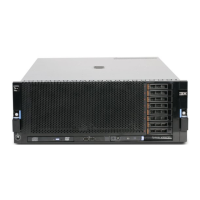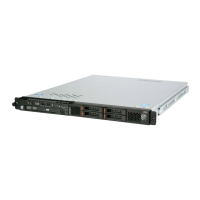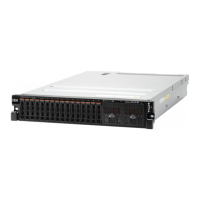Chapter 4. Troubleshooting
This information describes the diagnostic tools and troubleshooting information that are available to help you
solve problems that might occur in the server.
If you cannot diagnose and correct a problem by using the information in this chapter, see Appendix E
“Getting help and technical assistance” on page 1951 for more information.
Start here
You can solve many problems without outside assistance by following the troubleshooting procedures in this
documentation and on the World Wide Web.
This document describes the diagnostic tests that you can perform, troubleshooting procedures, and
explanations of error messages and error codes. The documentation that comes with your operating system
and software also contains troubleshooting information.
Diagnosing a problem
Before you call an approved warranty service provider, follow these procedures in the order in which they are
presented to diagnose a problem with your server.
Step 1. Return the server to the condition it was in before the problem occurred. If any hardware,
software, or firmware was changed before the problem occurred, if possible, reverse those
changes. This might include any of the following items:
• Hardware components
• Device drivers and firmware
• System software
• UEFI firmware
• System input power or network connections
Step 2. View the light path diagnostics LEDs and event logs. The server is designed for ease of
diagnosis of hardware and software problems.
• Light path diagnostics LEDs: See “Light path diagnostics” on page 152 for information about
using light path diagnostics LEDs.
• Event logs: See “Event logs” on page 161 for information about notification events and
diagnosis.
• Software or operating-system error codes: See the documentation for the software or
operating system for information about a specific error code. See the manufacturer's website for
documentation.
Step 3. Run Dynamic System Analysis (DSA) and collect system data. Run Dynamic System Analysis
(DSA) to collect information about the hardware, firmware, software, and operating system. Have
this information available when you contact your approved warranty service provider. For
instructions for running DSA, see the Dynamic System Analysis Installation and User's Guide.
To download the latest version of DSA code and the Dynamic System Analysis Installation and
User's Guide, go to
https://support.lenovo.com/solutions/LNVO-DSA.
© Copyright Lenovo 2014, 2019 145

